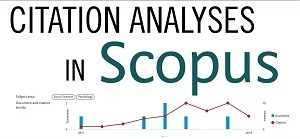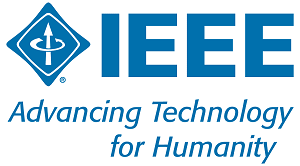Radiography Hystero Salpingography (HSG) With the Allegation of Nonpatency of Both Fallopii Tubes at Columbia Asia Hospital Medan
Keywords:
Hystero Salpingography (HSG), Non-patency of both fallopian tubes, Computed Radiography (CRAbstract
Hystero Salpingography (HSG) radiography with suspected non-patency of both fallopian tubes at the Radiology Installation of Columbia Asia Hospital, Medan. Scientific Writing for the Diploma III Radiodiagnostic Engineering and Radiotherapy Study Program Sinar Amal Bhakti Foundation Medan 2021. Hystero Salpingography (HSG) is an examination of the uterus and salpinx using radio opaque contrast media via a uterine canule carried out by a radiologist with the patient supine on the flouroscopy table, examination This can also be done with conventional radiography using a tube from above. Non-patent tubes are tubes that are occluded so that sperm cannot reach the ampulla to fertilize the ovum. The aim of the examination is to show the anatomy and abnormalities accurately by means of contrast injection using a catheter. This research was conducted at the Radiology Installation at Columbia Asia Hospital, Medan. The examination technique uses an antero-posterior projection which aims to optimally show the anatomical structure of the uterus and fallopian tubes. The aircraft used in this research is a Philips Pesawar General X-ray Unit with the Bucky Diagnost CS.Optimus 80 type and a capacity of 500 mA. The cassette used measures 18x24 cm. The film processing process used is Computed Radiography (CR).
Downloads
References
D. Rochmayanti et al., “Image Improvement and Dose Reduction on Computed Tomography Mastoid Using Interactive Reconstruction,” in Journal of Big Data, vol. 9, no. 1, SpringerOpen, 2023, pp. 103–116.
D. M. Sipahutar, “Pemeriksaan Buick Nier Overzicht Intra Venous Pyelografi (BNO-IVP) dengan Sangkaan Hidronefrosis Pada Pasien di Rumah Sakit Umum Pusat Haji Adam Malik Medan,” J. Med. Radiol., vol. 3, no. 1, pp. 12–18, 2021, [Online]. Available: https://jmr.jurnalsenior.com/index.php/jmr/article/view/27.
J. M. Elmore, W. H. Cerwinka, and A. J. Kirsch, “Assessment of renal obstructive disorders: ultrasound, nuclear medicine, and magnetic resonance imaging,” in The Kelalis--King--Belman Textbook of Clinical Pediatric Urology, CRC Press, 2018, pp. 495–504.
N. M. Etedali, J. A. Reetz, and J. D. Foster, “Complications and clinical utility of ultrasonographically guided pyelocentesis and antegrade pyelography in cats and dogs: 49 cases (2007–2015),” J. Am. Vet. Med. Assoc., vol. 254, no. 7, pp. 826–834, Apr. 2019, doi: 10.2460/javma.254.7.826.
C. Casteleyn, N. Robin, and J. Bakker, “Topographical Anatomy of the Rhesus Monkey (Macaca mulatta)—Part II: Pelvic Limb,” Vet. Sci., vol. 10, no. 3, p. 172, 2023.
D. A. Rosenfield, N. F. Paretsis, P. R. Yanai, and C. S. Pizzutto, “Gross Osteology and digital radiography of the common Capybara (Hydrochoerus hydrochaeris), Carl Linnaeus, 1766 for scientific and clinical application,” Brazilian J. Vet. Res. Anim. Sci., vol. 57, no. 4, pp. e172323–e172323, 2020.
C. Lemieux, C. Vachon, G. Beauchamp, and M. E. Dunn, “Minimal renal pelvis dilation in cats diagnosed with benign ureteral obstruction by antegrade pyelography: a retrospective study of 82 cases (2012–2018),” J. Feline Med. Surg., vol. 23, no. 10, pp. 892–899, Oct. 2021, doi: 10.1177/1098612X20983980.
E. P. Lestari, D. D. Cahyadi, S. Novelina, and H. Setijanto, “PF-30 Anatomical Characteristic of Hindlimb Skeleton of Sumatran Rhino (Dicerorhinus sumatrensis),” Hemera Zoa, 2018.
P. Salinas, A. Arenas-Caro, S. Núñez-Cook, L. Moreno, E. Curihuentro, and F. Vidal, “Estudio morfométrico, anatómico y radiográfico de los huesos del miembro pélvico del huemul patagónico en peligro de extinción (Hippocamelus bisulcus),” Int. J. Morphol., vol. 38, no. 3, pp. 747–754, 2020.
N. R. Sayal, S. Boyd, G. Zach White, and M. Farrugia, “Incidental mastoid effusion diagnosed on imaging: are we doing right by our patients?,” Laryngoscope, vol. 129, no. 4, pp. 852–857, 2019.
S. L. Purchase, “Point and shoot: a radiographic analysis of mastoiditis in archaeological populations from England’s North-East.” University of Sheffield, 2021.
N. R. Sayal, S. Boyd, G. Zach White, and M. Farrugia, “Incidental mastoid effusion diagnosed on imaging: Are we doing right by our patients?,” Laryngoscope, vol. 129, no. 4, pp. 852–857, Apr. 2019, doi: 10.1002/lary.27452.
R. Tamura, R. Tomio, F. Mohammad, M. Toda, and K. Yoshida, “Analysis of various tracts of mastoid air cells related to CSF leak after the anterior transpetrosal approach,” J. Neurosurg., vol. 130, no. 2, pp. 360–367, Feb. 2019, doi: 10.3171/2017.9.JNS171622.
F. P. Machado, J. E. F. Dornelles, S. Rausch, R. J. Oliveira, P. R. Portela, and A. L. S. Valente, “Osteology of the pelvic limb of nine-banded-armadillo, dasypus novemcinctus linnaeus, 1758 applied to radiographic interpretation,” Brazilian J. Dev., vol. 9, no. 05, pp. 14686–14709, 2023.
J. J. Crivelli et al., “Clinical and radiographic outcomes following salvage intervention for ureteropelvic junction obstruction,” Int. braz j urol, vol. 47, pp. 1209–1218, 2021.
G. K. DOĞAN and İ. TAKCI, “A macroanatomic, morphometric and comparative investigation on skeletal system of the geese growing in Kars region II; Skeleton appendiculare,” Black Sea J. Heal. Sci., vol. 4, no. 1, pp. 6–16, 2021.
M. Lee et al., “Role of buccal mucosa graft ureteroplasty in the surgical management of pyeloplasty failure,” Asian J. Urol., Nov. 2023, doi: 10.1016/j.ajur.2023.09.001.
D. R. N. U. R. S. M. ROSLI, “THE CORRELATION OF SEVERITY OF BRONCHIECTASIS BASED ON MODIFIED REIFF CT SCORING WITH CLINICAL OUTCOMES.” UNIVERSITI SAINS MALAYSIA, 2018.
A. Pongkunakorn, C. Aksornthung, and N. Sritumpinit, “Accuracy of a New Digital Templating Method for Total Hip Arthroplasty Using Picture Archiving and Communication System (PACS) and iPhone Technology: Comparison With Acetate Templating on Digital Radiography,” J. Arthroplasty, vol. 36, no. 6, pp. 2204–2210, Jun. 2021, doi: 10.1016/j.arth.2021.01.019.
A. Peiro, N. Chegeni, A. Danyaei, M. Tahmasbi, and J. FatahiAsl, “Pelvis received dose measurement for trauma patients in multi-field radiographic examinations: A TLD dosimetry study,” 2022.
M. Shafiee et al., “Knowledge and Skills of Radiographers concerning ‘Digital Chest Radiography,’” J. Clin. Care Ski., vol. 3, no. 4, pp. 197–202, Dec. 2022, doi: 10.52547/jccs.3.4.197.
T. J. Meyer et al., “Systematic analysis of button batteries’, euro coins’, and disk magnets’ radiographic characteristics and the implications for the differential diagnosis of round radiopaque foreign bodies in the esophagus,” Int. J. Pediatr. Otorhinolaryngol., vol. 132, p. 109917, 2020.
A. Patel, F. Schnoll-Sussman, and C. P. Gyawali, “Diagnostic Testing for Esophageal Motility Disorders: Barium Radiography, High-Resolution Manometry, and the Functional Lumen Imaging Probe (FLIP),” in The AFS Textbook of Foregut Disease, Cham: Springer International Publishing, 2023, pp. 269–278.
Z. Farzanegan, M. Tahmasbi, M. Cheki, F. Yousefvand, and M. Rajabi, “Evaluating the principles of radiation protection in diagnostic radiologic examinations: collimation, exposure factors and use of protective equipment for the patients and their companions,” J. Med. Radiat. Sci., vol. 67, no. 2, pp. 119–127, Jun. 2020, doi: 10.1002/jmrs.384.
N. I. Olmedo-Garcia et al., “Assessment of magnification of digital radiographs in total HIP arthroplasty,” J. Orthop., vol. 15, no. 4, pp. 931–934, Dec. 2018, doi: 10.1016/j.jor.2018.08.024.
S. Lampridis, S. Mitsos, M. Hayward, D. Lawrence, and N. Panagiotopoulos, “The insidious presentation and challenging management of esophageal perforation following diagnostic and therapeutic interventions,” J. Thorac. Dis., vol. 12, no. 5, pp. 2724–2734, May 2020, doi: 10.21037/jtd-19-4096.
H. Alsleem et al., “Evaluation of Radiographers’ Practices with Paediatric Digital Radiography Based on PACS’ Data,” Integr. J. Med. Sci., vol. 7, 2020, doi: 10.15342/ijms.7.216.
M. J. Nelson et al., “Comparison of endoscopy and radiographic imaging for detection of esophageal inflammation and remodeling in adults with eosinophilic esophagitis,” Gastrointest. Endosc., vol. 87, no. 4, pp. 962–968, Apr. 2018, doi: 10.1016/j.gie.2017.09.037.
V. Dollo, G. Chambers, and M. Carothers, “Endoscopic retrieval of gastric and oesophageal foreign bodies in 52 cats,” J. Small Anim. Pract., vol. 61, no. 1, pp. 51–56, Jan. 2020, doi: 10.1111/jsap.13074.
V. Torrecillas and J. D. Meier, “History and radiographic findings as predictors for esophageal coins versus button batteries,” Int. J. Pediatr. Otorhinolaryngol., vol. 137, p. 110208, 2020.
Published
How to Cite
Issue
Section
Copyright (c) 2023 Djamiandar Simamora, Stephanie Ariyanti

This work is licensed under a Creative Commons Attribution 4.0 International License.





























